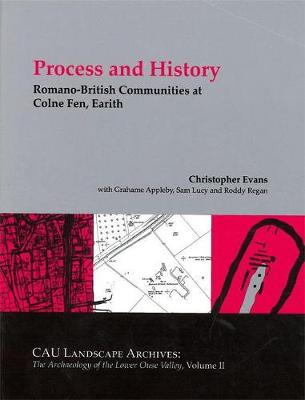Charting a decade of intensive fieldwork along a 2km stretch of the Colne Fen, Earith fen-edge, the scope of these books is formidable and together they include the work of 65 contributing specialists (with a foreword by Ian Hodder). The fieldwork involved innovative methodologies, and groundbreaking scientific and micro-sampling studies are presented within the volumes. Portions of text are, moreover, avowedly experimental (e.g. intertextuality and antiquarian-informed perspectives) and it explores the long-term interplay of landscape process and (proto-) historicism. Appropriate to the practice of a comparative archaeology and the ‘challenge of numbers’, throughout emphasis is given to multiple-scale settlement and spatial/distributional analyses.
The scale of Volume II — the ‘Roman book’ — is even more daunting. Aside from including reports of earlier local excavations, it is primarily concerned with two major ‘set-piece’ sites. The one, Langdale Hale, was a mass-production supply farm; the other, The Camp Ground, a great inland barge-port settlement linked to the Car Dyke canal. Both reflect upon the potential role of the state and address crucial issues of ‘Romanization’, with facets of their sequences markedly contrasting with the Stonea-engendered Fenland Imperial Estate model. Besides uniquely detailing the character of the settlements’ Late Roman usage (involving terpen-like mounds and raised ‘platformed’ structures) and trade connections, the port-site’s aftermath is also discussed as an important assemblage of Anglo-Scandinavian bonework was recovered. To provide further immediate-landscape context, the results from neighbouring sites also
feature, including an important Late Roman cemetery at Knobbs Farm, Somersham.
- ISBN10 0957559208
- ISBN13 9780957559202
- Publish Date 16 December 2013
- Publish Status Active
- Out of Print 12 June 2022
- Publish Country GB
- Imprint Cambridge Archaeological Unit
- Format Hardcover
- Pages 534
- Language English
